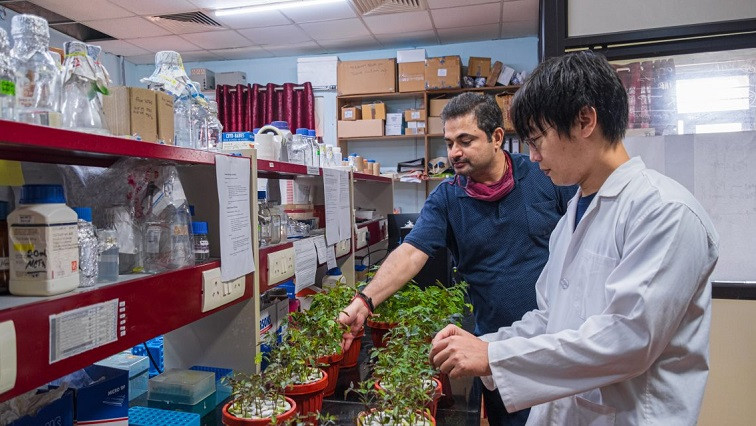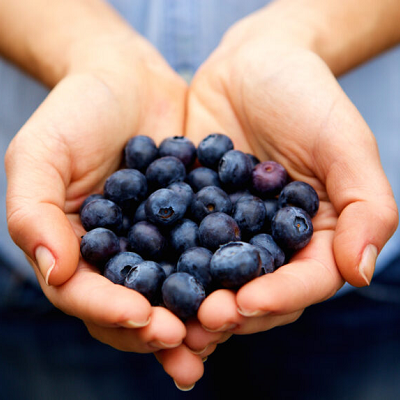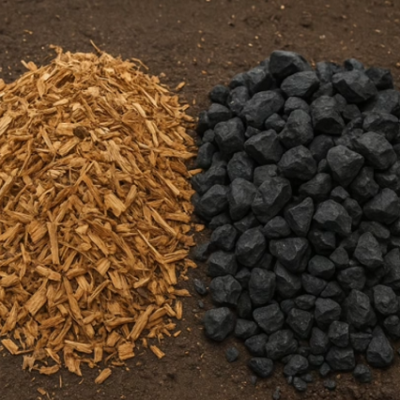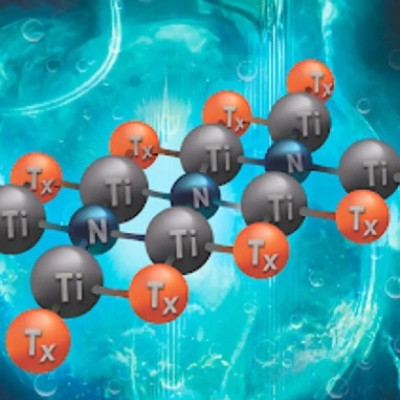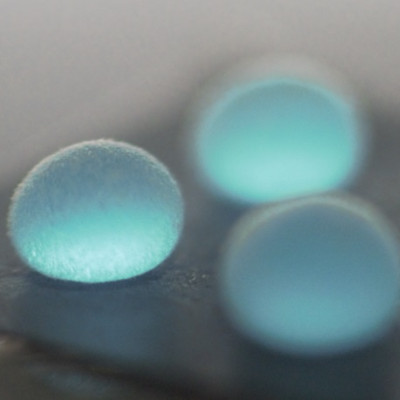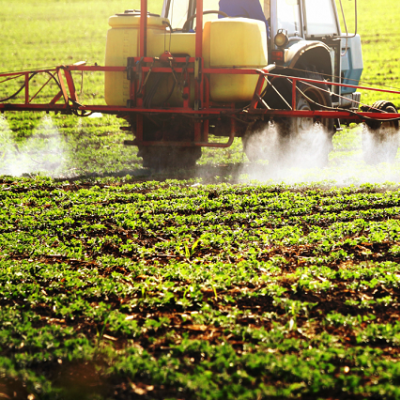Chemical fertilizers application is critical to boosting crop productivity. In fact, besides improved varieties and better irrigation methods, one of the factors that contributed to the enhanced crop productivity during the green revolution and afterward is the application of chemical Nitrogen (N), Phosphorus (P), and Potassium (K) fertilizers. However, excessive use of these chemicals over decades has affected the soil quality.
Therefore, a concerted effort is required to cut down the use of chemical fertilizers in agriculture. Global P reserves are finite and likely to be irreversibly exhausted in the next 100-200 years. These resources are also asymmetrically distributed globally. Therefore, long-term planning for the uninterrupted supply of P-fertilizers either by securing P-reserves or cutting down P-use in agriculture is crucial to food security and agriculture sustainability. It is more urgent for the countries like ours, which lack big natural P-reserves and meets its P-fertilizers demand by importing the maximum amount of rock phosphates in different forms.
In this innovative collaborative research, a team led by Dr. Rahul Kumar and involving both material scientists and plant biologists from the University of Hyderabad (UoH) and International Advanced Research Centre for Powder Metallurgy and New Materials (ARCI), first developed an industrially viable dry method to generate chemically stable and ~5000 times smaller nano-diammonium phosphate (n-DAP) fertilizer.
Subsequent testing of both types of fertilizers on tomato and wheat seedlings demonstrated an extraordinary superiority of nano-DAP fertilizer over the conventional granular DAP (c-DAP). By testing four different procedures for the nano-DAP dispersal, the team even recommends the best method of its application. In the lab-scale experiments, the reduced quantity of nano-DAP fertilizer input than c-DAP promoted the early seedlings growth and development in both crops. It also led to enhanced phosphate uptake efficiency in these seedlings.
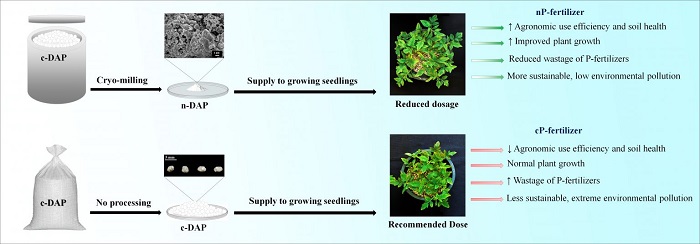
Fig. Scheme representing cryo-milling method for the development of nano-diammonium phosphate (nano-DAP) fertilizer with enhanced agronomic use efficiency. Cryo-milling of granular DAP was done at ARCI, Hyderabad. With nano-DAP, tomato seedings show better growth and develop more foliage. nP, nan-DAP; cP, conventional granular DAP fertilizer
Based on these promising results in the lab-scale experiments, the research team is now planning to test the efficacy of nano-DAP on tomato plants under field conditions. While several hurdles remain to be overcome before the real potential of nano-DAP can be realized under field conditions, the researchers think its application in reduced quantity may significantly cut down on the overall input of conventional P-fertilizers currently applied in agriculture. Therefore, n-DAP in reduced doses while meeting the plants’ optimum P nutrient requirement would also be preferred for better soil health and agricultural sustainability.
This work entitled “Cryo-milled nano-DAP for enhanced growth of monocot and dicot plants” by Naorem Ronald Reagan Singh et al. June 2021 is recently published in Nanoscale Advances, a reputed scientific journal published by the Royal Society of Chemistry.
Read the original article on UoH Herald.

